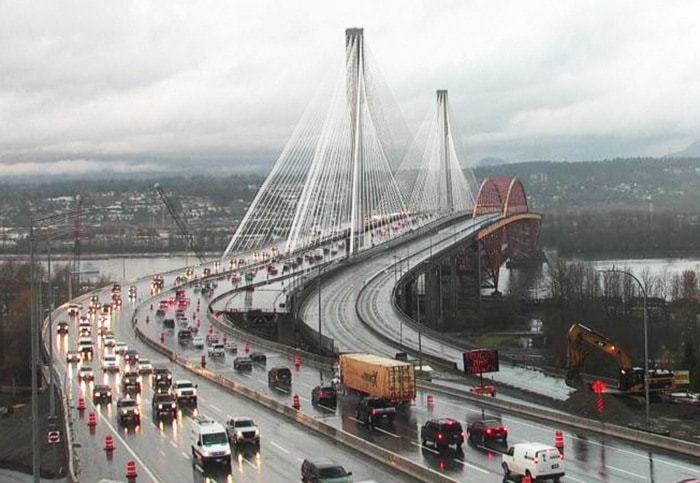I am a resident in Fraser Heights and have observed the traffic problems caused by congestion at the Port Mann Bridge for nine years.
For over a decade now, there have been major back-ups on both sides of the bridge. The situation has deteriorated significantly in the past two or three years; back-ups are continuous, persisting for over 16 hours a day. It takes between 16 and 20 minutes to travel 5.8 kilometres from 160 Street to the north/west side of the bridge. During peak periods, traffic backs up to 176, 192 and even 200 Streets. Frustrated drivers exit the highway at 176 Street and re-enter the queue at 160 Street, eventually clogging all exit-ways out of Fraser Heights and preventing local residents from leaving the community. If there is an accident or some other incident (i.e. cones mistakenly left behind), all traffic comes to an absolute standstill.
As I’ve observed this growing problem over the past nine years, I am unconvinced that the bridge-widening effort is enough to redress this major traffic crisis. This is something that should have been completed over 15 years ago.
Moreover, there are complicating design issues that I believe the public is not aware of.
For example: 1). The 152 Street on-ramp traffic will cause crippling congestion immediately before the bridge, as there are two busy and full lanes of traffic that are required to merge; 2). Three non-HOV lanes compress down to two lanes, again, right before the bridge; 3). On the Coquitlam side, congestion is already evident with traffic pouring off the Cape Horn interchange onto Highway 1 eastbound immediately before the bridge (no change from before).
The public needs to be aware that there is only one additional lane (HOV) in the westbound stretch of highway leading up to the bridge. This is a very significant bottleneck that is going to completely negate any benefit of the widened bridge.
Are additional lanes planned? How can one HOV lane accommodate the current traffic demand?
Tolls on this bridge are going to be very difficult to stomach. If one considers that the back-ups may not be appreciably reduced, then we will be paying for new bridge that doesn’t work.
Meanwhile, the Transportation Investment Corporation would have us “hang in there,” but I question, hang in for what?
I suspect we’ll learn soon that not only are we going to line up for the new bridge, we will just have to “hang in there” while TReO collects tolls for all our waiting.
Lyslie Koch
